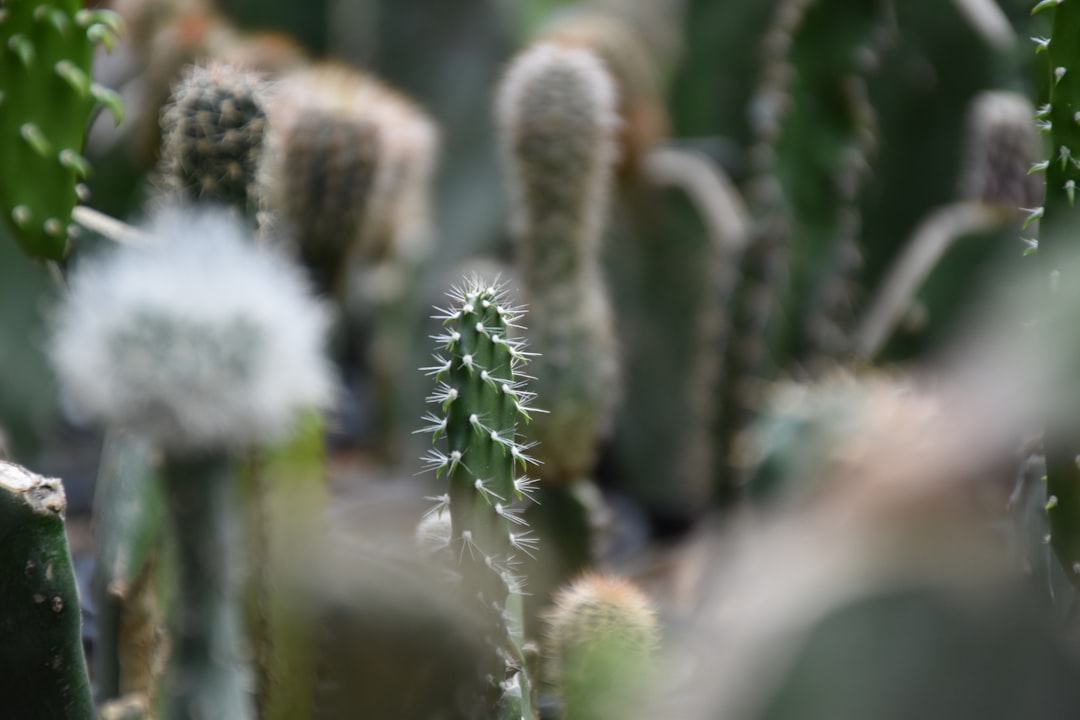Fruit tree cultivation plays a crucial role in providing us with a variety of delicious and nutritious fruits. However, growing fruit trees can be a challenging task, as they require specific conditions and care to thrive. One technique that has revolutionized fruit tree cultivation is grafting. Grafting is the process of joining two different plant parts together to create a new plant with desirable traits. This article will explore the importance of grafting in fruit tree cultivation, its history and evolution, the benefits it offers, and provide step-by-step instructions for beginners.
Key Takeaways
- Grafting is a technique used in fruit tree cultivation to combine the desirable traits of two different trees.
- The history of grafting dates back to ancient civilizations and has evolved over time with new techniques and technologies.
- Grafting can improve yields, disease resistance, and adaptability to different growing conditions.
- Identifying the best grafting sites and choosing the right rootstock are important considerations for successful grafting.
- Beginners can learn grafting techniques through step-by-step instructions, but may encounter common challenges that require troubleshooting.
What is grafting and why is it important in fruit tree cultivation?
Grafting is a horticultural technique that involves joining the tissues of two different plants together to create a new plant. The upper part of the plant, known as the scion, is selected for its desired traits such as fruit quality or flavor. The lower part, called the rootstock, provides the root system and determines the tree’s overall vigor and disease resistance.
Grafting is important in fruit tree cultivation for several reasons. Firstly, it allows growers to propagate desirable varieties that may not be easily grown from seeds or cuttings. This ensures that the desired traits of the scion are preserved and passed on to future generations of trees. Secondly, grafting allows for the production of trees with improved yields, disease resistance, and adaptability to different environmental conditions. By selecting the appropriate rootstock, growers can tailor their trees to specific soil types, climates, and growing conditions.
The history and evolution of fruit tree grafting techniques
The practice of grafting dates back thousands of years and has been used by various civilizations throughout history. The ancient Egyptians were known to have practiced grafting as early as 4000 BC. The technique was later adopted by the Greeks and Romans, who used it to propagate their favorite fruit varieties.
Over time, different grafting techniques have been developed and refined. The most common technique is whip grafting, which involves joining a scion and rootstock by making a diagonal cut on both and then binding them together. Other techniques include cleft grafting, side-veneer grafting, and bud grafting.
In recent years, advancements in grafting techniques have allowed for more precise and efficient grafting. These include the use of specialized tools and equipment, such as grafting knives and grafting tape, as well as the development of new grafting methods, such as micrografting and tissue culture.
The benefits of grafting fruit trees: improved yields, disease resistance, and more
Grafting fruit trees offers a range of benefits that can greatly improve fruit tree cultivation. One of the main advantages is improved yields. By selecting a rootstock that is known for its vigor and productivity, growers can increase the overall yield of their fruit trees. This is especially important for commercial growers who rely on high yields to meet market demands.
Another benefit of grafting is disease resistance. Some rootstocks are naturally resistant to certain diseases or pests, which can help protect the scion from infection. This is particularly important in areas where specific diseases or pests are prevalent.
Grafting also allows for the production of trees with specific characteristics, such as dwarf or semi-dwarf trees. These smaller trees are easier to manage and harvest, making them ideal for home gardeners or growers with limited space.
Understanding the anatomy of fruit trees: how to identify the best grafting sites
To successfully graft fruit trees, it is important to understand their anatomy and identify the best grafting sites. Fruit trees have two main types of tissue: the cambium layer and the vascular system. The cambium layer is responsible for producing new cells that allow the tree to grow in girth, while the vascular system transports water and nutrients throughout the tree.
When selecting a grafting site, it is important to choose a location where the cambium layers of the scion and rootstock can be aligned. This allows for the successful fusion of the tissues and ensures that nutrients can flow freely between the two parts. The best grafting sites are usually found on young, healthy branches that are about the same diameter as the scion.
There are several types of grafting techniques that can be used depending on the type of fruit tree and desired outcome. These include whip grafting, cleft grafting, side-veneer grafting, and bud grafting. Each technique has its own advantages and disadvantages, so it is important to choose the one that is best suited for your specific needs.
Choosing the right rootstock for your fruit tree: considerations and options
Choosing the right rootstock for your fruit tree is a crucial step in successful grafting. The rootstock determines the overall vigor, disease resistance, and adaptability of the tree. There are several factors to consider when selecting a rootstock, including soil type, climate, desired tree size, and disease resistance.
Different rootstocks have different characteristics and are suited to different types of fruit trees. For example, some rootstocks are known for their dwarfing or semi-dwarfing characteristics, which can be beneficial for home gardeners or growers with limited space. Other rootstocks are known for their disease resistance or adaptability to specific soil types or climates.
It is important to research and consult with experts or local nurseries to determine which rootstock is best suited for your specific needs. They can provide valuable insights and recommendations based on their knowledge and experience.
Techniques for grafting fruit trees: step-by-step instructions for beginners
Grafting fruit trees may seem daunting at first, but with practice and patience, it can be mastered by beginners. Here is a step-by-step guide to grafting fruit trees:
1. Gather the necessary tools and materials: You will need a sharp grafting knife, grafting tape or rubber bands, and a disinfectant solution.
2. Select the scion and rootstock: Choose a healthy scion with desirable traits and a compatible rootstock.
3. Prepare the scion and rootstock: Make a diagonal cut on both the scion and rootstock, ensuring that the cambium layers are aligned.
4. Join the scion and rootstock: Place the scion onto the rootstock, aligning the cambium layers. Secure them together using grafting tape or rubber bands.
5. Protect the graft: Apply a layer of grafting wax or sealant to protect the graft from drying out or becoming infected.
6. Monitor and care for the graft: Keep an eye on the graft to ensure that it is successful. Water regularly and provide appropriate care based on the specific needs of the fruit tree.
Common challenges and troubleshooting tips for successful fruit tree grafting
Grafting fruit trees can be challenging, and there are several common challenges that growers may face. These include poor alignment of cambium layers, poor healing of the graft union, and infection or disease.
To overcome these challenges, it is important to ensure that the cambium layers of the scion and rootstock are properly aligned during grafting. This will allow for successful fusion of the tissues and ensure that nutrients can flow freely between the two parts.
If the graft union does not heal properly, it may be necessary to regraft or try a different technique. It is also important to monitor the graft for signs of infection or disease and take appropriate measures to prevent further damage.
Maintaining and caring for grafted fruit trees: pruning, fertilization, and more
Once a fruit tree has been successfully grafted, it is important to provide proper care and maintenance to ensure its continued health and productivity. This includes regular pruning, fertilization, watering, and pest control.
Pruning is an important part of maintaining grafted fruit trees. It helps shape the tree, promote healthy growth, and improve fruit production. It is important to follow proper pruning techniques and timing to avoid damaging the graft union.
Fertilization is also crucial for the health and productivity of grafted fruit trees. It is important to provide the tree with the necessary nutrients, such as nitrogen, phosphorus, and potassium, as well as micronutrients. The specific fertilizer requirements will depend on the type of fruit tree and the soil conditions.
Watering is another important aspect of caring for grafted fruit trees. It is important to provide the tree with adequate water, especially during dry periods or when the tree is young and establishing its root system. However, it is also important to avoid overwatering, as this can lead to root rot or other diseases.
Pest control is another important aspect of maintaining grafted fruit trees. Regular monitoring for pests and diseases is crucial, as early detection can help prevent further damage. It is important to use appropriate pest control methods that are safe for both the tree and the environment.
Innovative approaches to fruit tree grafting: new technologies and experimental methods
In recent years, there have been several innovative approaches to fruit tree grafting that have helped improve fruit tree cultivation. These include the use of new technologies and experimental methods.
One such approach is micrografting, which involves grafting very small pieces of tissue onto a rootstock. This allows for the production of a large number of plants from a single scion, making it a cost-effective method for commercial growers.
Another innovative approach is tissue culture, which involves growing plants in a laboratory under sterile conditions. This allows for the production of disease-free plants with desirable traits, such as improved yields or disease resistance.
Other experimental methods include the use of genetic engineering to introduce specific traits into fruit trees, such as enhanced flavor or nutritional content. While these methods are still in the experimental stage, they hold great promise for the future of fruit tree cultivation.
The future of fruit tree grafting: emerging trends and opportunities for growers
The future of fruit tree grafting looks promising, with emerging trends and opportunities for growers. One such trend is the growing demand for organic and locally grown fruits. Grafting allows growers to produce disease-resistant trees without the use of chemical pesticides, making it an ideal technique for organic fruit production.
Another trend is the development of new rootstocks that are adapted to specific environmental conditions, such as drought or high salinity. These rootstocks can help growers overcome the challenges posed by climate change and ensure the continued productivity of their fruit trees.
Opportunities for growers also exist in the development of new fruit varieties with improved flavor, texture, or nutritional content. Grafting allows for the preservation and propagation of these desirable traits, ensuring that consumers have access to high-quality fruits.
In conclusion, grafting plays a crucial role in fruit tree cultivation by allowing growers to propagate desirable varieties, improve yields, and enhance disease resistance. The history and evolution of grafting techniques have led to advancements in efficiency and precision. Understanding the anatomy of fruit trees and choosing the right rootstock are key factors in successful grafting. By following step-by-step instructions and troubleshooting tips, growers can overcome common challenges and maintain grafted fruit trees through proper care and maintenance. Innovative approaches and emerging trends offer exciting opportunities for the future of fruit tree grafting. It is important for growers to explore these techniques and options to maximize their success in fruit tree cultivation.
If you’re interested in learning about grafting fruit trees, you might also enjoy reading this article on Kepuli.com about the benefits of using gaming laptops for programming. It explores whether gaming laptops can be a suitable option for programmers and provides valuable insights into their performance and functionality. Check it out here.




Leave a Reply
You must be logged in to post a comment.